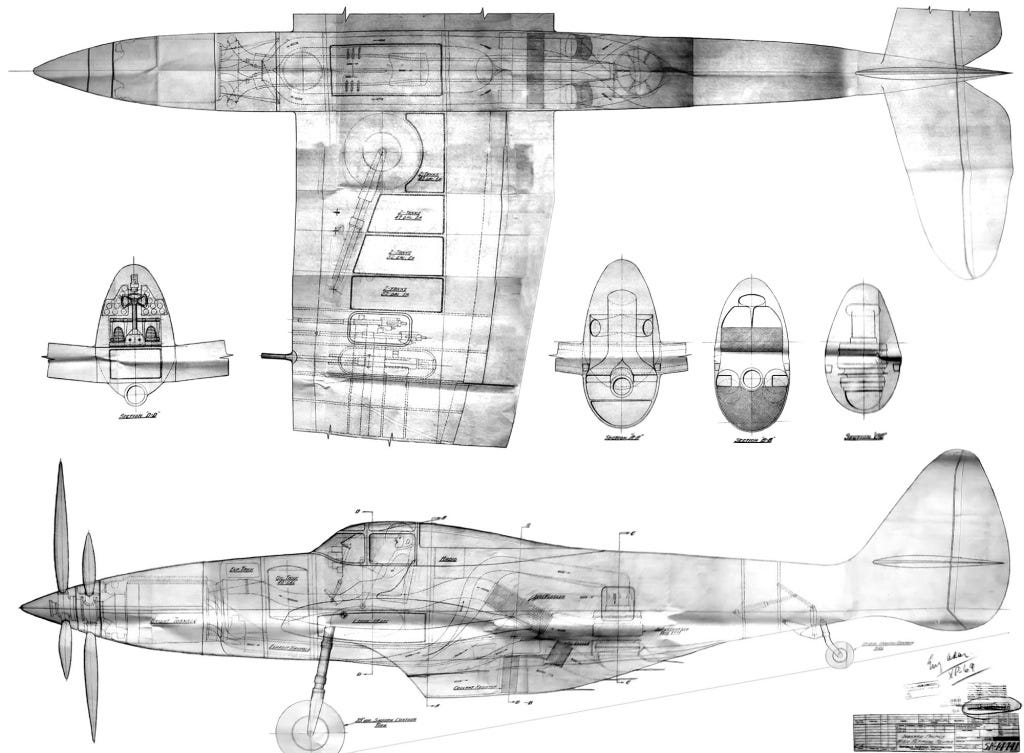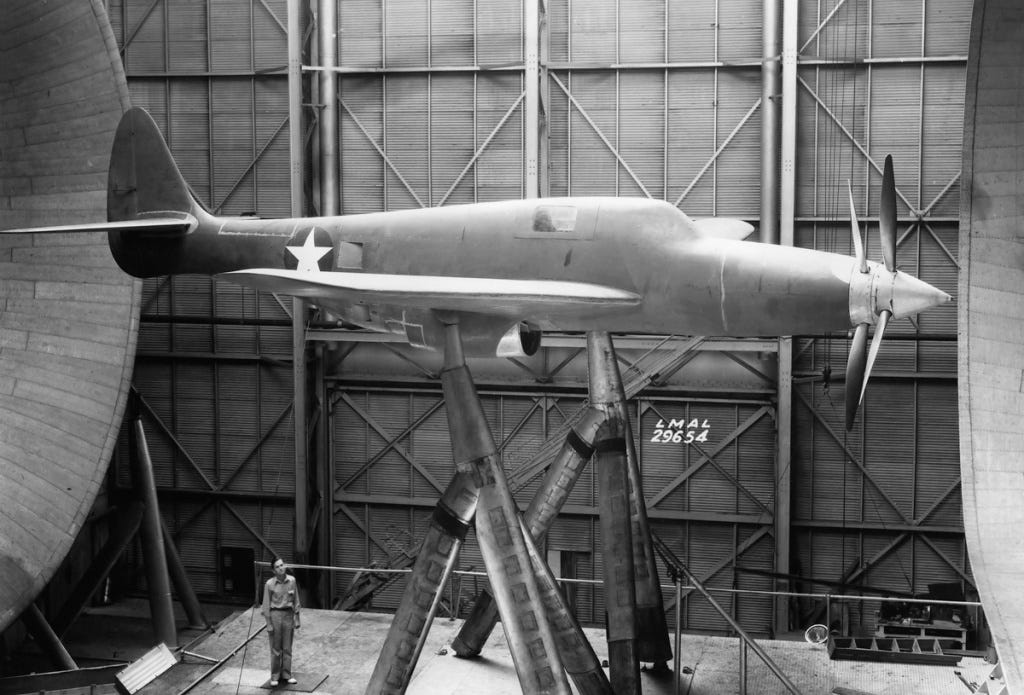The death of the Republic XP-69 superfighter
High altitude interceptor with 37-mm autocannon gone forever
The Republic XP-69 would have been a fast and well-armed menace, capable of blasting enemy aircraft to pieces, even at extreme altitudes. But, it was swatted from history by bad luck.
Contra-rotating propellers (two sets of propellers sharing an axle and counter-rotating) are fuel efficient and offer a far great amount of power for a given frontal cross-section, but they're frightening loud and hideously complex. A British invention, the contra-rotating propeller was thought of by the utterly brilliant polymath Frederick W. Lanchester some time before 1909. Though he may have looked like a supporting cast member in feel-good comedy set in the North of England, he was an astonishing man in many ways comparable to Nikola Tesla. Much like Tesla, he was brilliant at everything. He was excellent at singing, radical new automotive ideas, aerodynamic theory and poetry among many other talents. In fact he was pretty brilliant at everything, apart from capitalism. He contributed much to the world but was always short of money.
The British used this configuration on all their most unlucky aircraft: the fabulous capable but ill-fated Martin-Baker MB.5, and the technically brilliant and commercially unfortunate Brabazon and Princess. Only the unfeasibly hideous Westland Wyvern, Gannet, Sturgeon and admittedly passible Shackleton made it into service on contra alone (others like the Spitfire had a contra version). The French tried a racer, the gorgeous Bugatti 100P, a promising design thwarted by the German invasion of France. The Soviets, managed to get a four-engined fast bomber into service, the Tu-95/142, as well as an airliner derivative (the Tu-114) and a terrible VVIP transport, the Tu-116. The US gave its most eccentric aircraft concepts of the 1940s and '50s contra-rotating propellers.
The Reluctant Rocket
In 1941 the USAAF, keen to shake-off the American love affair with mediocre and overly conventional fighters, asked aircraft manufacturers to submit unorthodox 450mph fighters for consideration. To make it even more high-risk they also invited engine manufacturers to submit new and unorthodox ideas. Republic responded to the request for fighter submissions with the AP-12 'Rocket'. With its mid-mounted engine and contra-rotating props it shared much conceptually with the Bugatti 100P. It did badly when assessed against the other designers, achieving 12th or 13th ranking. Republic went back to the drawing board.
They responded with plans for a high-performance high altitude interceptor, the XP-69, which was designed for a top speed of 450mph+, armed with one or two 37-mm cannon and two .50 cal heavy machine guns. The aircraft was in many ways an excellent design by a superb design team, but its downfall was technical risk. The fighter combined the incomplete 42-cylinder R-2160 engine with a new propeller configuration, and a pressurised cockpit. When the engine programmed struggled, USAAF turned to another Republic aircraft, the XP-72.
Cock & Bear story
The failure of the R-2160 impacted on some other promising designs, notably the Lockheed XP-58 Chain Lightning and the Vultee XP-68 Tornado. Today, the unholy row of contra-propellers can be heard on the Tu-95 'Bear' bombers of the Russian Air Force, and if still flying, the Antonov An-22. Will this technology die with the 'Bear'? Probably not, as whenever aviation fuel prices get high enough, designers turn back to studying the Lanchester's contra-rotational ideas.
The Hush-Kit Book of Warplanes Vol 2 is funded by pre-orders, and is now 69% funded. Get involved here. What, you haven't even ordered the first one yet? That's embarrassing, but we can save you face here.







Umm... the Fairey Gannet, also with contraprops, also made it into FAA service, and for far longer than the Wyvern.